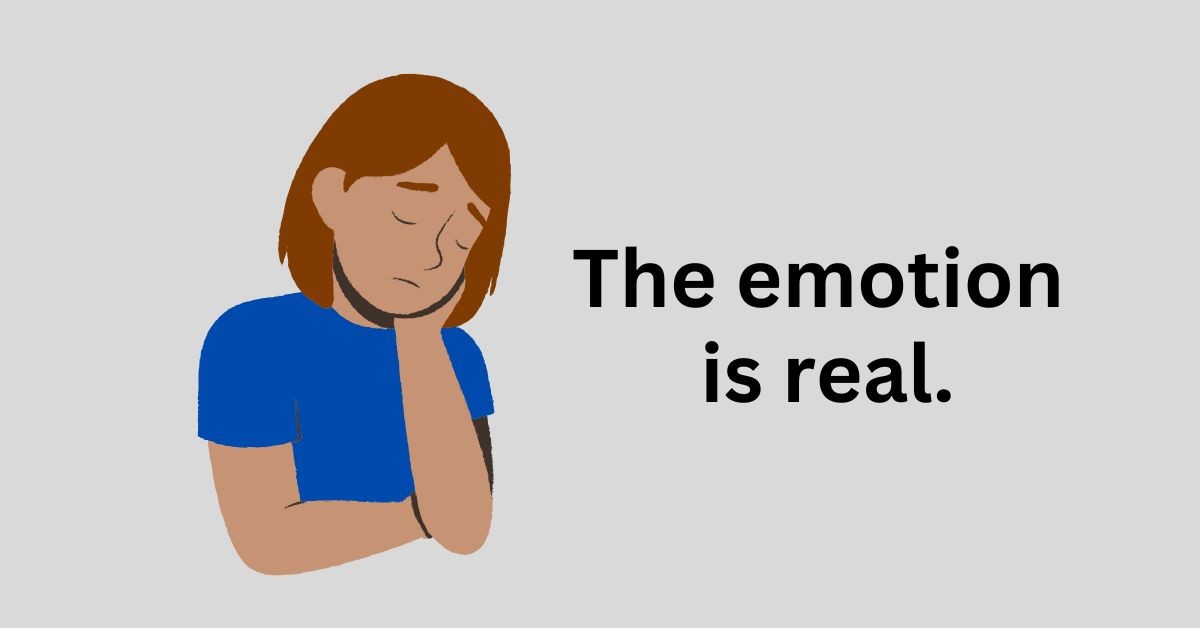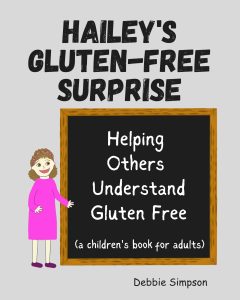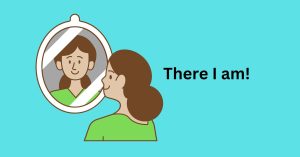This page may contain Amazon affiliate links.
The Emotional Side Part 1: Mourning The Loss
Special Diets Can Cause Some Very Big Emotions
This isn’t a pity party. This isn’t going to be a sad, sappy post about all the foods we have to give up as someone with celiac or non-celiac gluten sensitivity. Having to give up gluten doesn’t compare to the loss of a loved one. It is a loss, however. And it is a loss that often requires a period of mourning.
I feel blessed to have finally found health, even if it means having to be strictly gluten free. Nope, this is not a pity party at all. This is just the very real side of things.
Mourning the loss of the foods we can no longer eat is often just a part of our healing process.
Decades Of Health Complications
I spent a lifetime with various health issues. When I was a child my mom was always looking for ways to help me gain weight, to relieve my issues with constipation, and to prevent and diminish my chronic and serious asthma attacks. I shared several other issues in my post: A Lifetime of Undiagnosed Celiac: A Life Put on Hold.
For the couple years before I turned 40, it got pretty scary for me. I was seriously concerned about my future.
An Answer! I Have An Answer!
I learned about celiac in September of 2000. I was 40, and had been seeing a bone specialist for the past two years after discovering that I had severe osteoporosis.
I was invited to participate in a newly funded osteoporosis-celiac study.
Celiac? What’s that?
Like most others back then, I had never heard of celiac. I had never heard of gluten. But having an answer would be A-mazing! I was absolutely ecstatic at the thought of having an answer—-no matter what this meant.
My blood was drawn. I was then told that it would take a couple weeks for lab results. But the call came just two (or was it three) days later. I remember standing in the school office (no cell phone back then) and hearing those words from the nurse on the other end, “You have celiac disease.”
I was SO happy. I was beyond happy. “I thought it would take a couple weeks for the results,” I asked.
“Your numbers were so high that the results were very clear,” she answered. “But you will still need a biopsy to complete the testing.”
I Thought I Knew What This Meant
I knew what this diagnosis meant (or thought I knew). I’d have to change the way I ate. I’d have to eliminate so much of what I was used to eating.
But that was OK. I had an ANSWER!
“This is wonderful!” I said to the nurse, nearly jumping up and down with joy. I’m sure my emotions were clear even through the phone line. But then I was confused. The nurse responded solemnly (like she was reporting that I had cancer or something similar), “No–you have celiac.”
Celiac isn’t a death sentence. This diagnosis meant another chance at life—at living! Gluten free? Pffffft… piece of cake! I had an answer for my osteoporosis–finally. And I was hoping it was also an answer to so many of the other health complications I’d been facing by that time. I had an answer I had probably needed most of my life.
Gluten Free Here I Come
Later that month, the biopsy showed clear damage even before the pathology report. I was sent home a couple hours after I woke up, a list of ingredients to avoid and an appointment slip with a dietitian in hand. My (then) husband and I stopped at Olive Garden for my last ever (or so I thought at that time) pasta meal, before I jumped, both feet forward, into my new hope for health.
I started my gluten-free journey on a high note–that I have an answer high that I didn’t think anything could bring me down from.
Ooops, was I wrong.
When Joy Turns To Tears (Mourning Begins)
I left the dietitian’s office with a view of my food world being even smaller and more cumbersome than I initially thought it would be. I initially thought it would be doable. Now I wasn’t so sure.
Before this visit I thought I could eat that chicken noodle soup, but just avoid the noodles. I thought I could still eat a cheeseburger, but just pull off the bun. Until then I had no idea that wheat could have so many other names and sneak its way into so many other ingredients. And I realized that this was oh-so-much more than just avoiding bread, cookies, pasta, and crackers.
As an early childhood educator I understand the importance of highlighting the can-dos over the don’t-dos. Instead of don’t run, use the words, walk please. Instead of don’t touch that, offer here’s something you can play with. Children don’t automatically know what they should be doing just by being told what NOT to do. And at this point, I was a child. I was in the infancy stage of my gluten-free life and I was only given a lot of don’t dos. It was incredibly deflating.
The Grocery Store Experience
If you wish labels were clearer now, it is nothing like it was back then. Perspective, I guess. Modified food starch, flavorings, vinegar—it all required a call to the manufacturer. And sometimes even they asked, “What’s gluten?”
Back then we were told to avoid vinegar (as it may be derived from a gluten grain). We have since learned that the distillation process removes gluten. But just imagine. Look at all your condiments and salad dressings. This is just a small example of the lack of clarity and the even shorter list I faced when wondering, What CAN I eat?
*(Special Note: Malt vinegar is still NOT gluten free. Malt=barley=gluten.)
A trip to the grocery store that used to only take an hour, start to finish, at the most, now took more than twice that. The utter frustration brought me to tears more than once. OK, to be fair, I am an emotional person. I cry when I’m happy. I cry when I’m sad. I cry when I’m frustrated. And OH-BOY was I frustrated!
Having to read every label and research many products that went into my cart was emotionally draining.
I quickly learned that this gluten-free thing was taking over my life! No one told me I’d find myself in a state of mourning.
Cravings Are Real. Cravings Are Powerful.
I had absolutely NO idea back then that there were replacement flours that made it possible to make products I thought I’d have to live forever without. And it was this, live forever without, that slowly and gradually crept into my core.
Food is powerful. Who doesn’t crave this, smell and want to eat that, see and want to dive right in to the other. And when your body has been starving for nutrients, literally, those cravings are even more powerful. They can be all consuming.
So that, no more fried chicken, and not another single cupcake with creamy rich frosting, and no more pizza loaded with all my favorite toppings, started to hit me–hard!
Yes, that mourning is very real.
Here Comes The Rain (The Mourning Stage Hit)
Two weeks. It took a whole two weeks for that reality to hit. That reality of never again, no more, nadda, zilch, OH MY GOD I WANT TO EAT _________, to hit. And I remember crying (alone).
I didn’t want my kids to know my grief. They needed to see that this diet was OK with me (because it was necessary for me in order to be completely present in their lives). It wouldn’t be fair to them to be given reason to feel sorry for their mom. But I did cry. And I mourned the loss of something I didn’t think I’d ever be able to have again.
When we think of mourning, we think of grieving the loss of a loved one. Of course, the loss of food doesn’t compare to the loss of a loved one. But many of us do require time to mourn the loss of a way of life. It is certainly real. And when we hit that wall, we have two choices: remain there in a crumbling mess, or turn.
A Ray Of Light
I wasn’t as familiar with the computer then like I am now, but I turned to it for support. And wow! There were support groups out there in the cyber world. There was information and research. And even better, there were ways to make those foods I was greatly missing.
Steps. The first recipe I found was for some kind of muffins. The flour was just rice flour. They were OK. Not fabulous. Of course, I learned later that the secret to gluten-free baking was a blend of flours and starches. But the result of that first attempt, albeit not great, let me know the potential was there for baked goods. (Although I later wished I learned to start with healthier blends. That’s OK, though. We are in constant states of learning.)
And then I found the recipe that proved to me that this was going to be OK: Carol Fenster’s recipe for chocolate chip cookies. This was huge. This was when I transitioned from infancy to toddler. Toddlers still cry a lot, but I was now that autonomous two-year-old with that, I can do it myself ambition. Of course, this did also come with the tantrums of a two-year-old, but those failed attempts drove the need for success.
A Work In Progress
The mourning phase took some time to work itself through. But time does heal the pain. And so does hard work.
Put your focus into wanting to be better for yourself and for your family. Let the memory of what health was (or lacked) before being gluten free drive you.
Allow yourself the pain. Allow yourself to mourn. It’s part of the healing process. But in between the tears and the tantrums, be sure to put on those boxing gloves and know what you are fighting for—-YOU!





